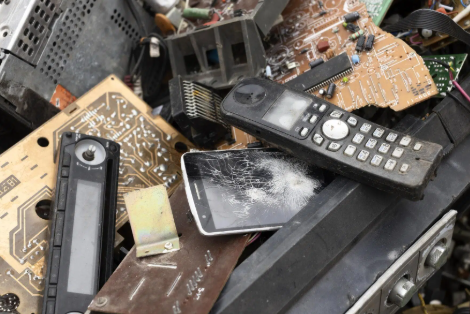India’s E-Waste Surges by 73%: Report
India’s electronic waste increased from 1.01 million metric tonnes (MT) in 2019-20 to 1.751 million MT in 2023-24. This represents a 72.54% growth, largely due to the rising consumption of electronic devices during the COVID-19 pandemic.
Composition of E-Waste
E-waste comprises hazardous materials such as arsenic, cadmium, lead, and mercury. If not disposed of correctly, these substances pose risks to human health and the environment.
In response to the escalating e-waste issue, the Government of India enacted updated E-Waste (Management) Rules in 2022. These rules became effective on April 1, 2023. They focus on enhancing e-waste collection and recycling through a framework known as Extended Producer Responsibility (EPR).
Extended Producer Responsibility (EPR)
Under EPR, producers are assigned annual recycling targets based on their e-waste output. To meet these targets, they must acquire EPR certificates from registered recyclers. These certificates confirm the amount of e-waste recycled, promoting accountability among manufacturers.
Current Recycling Statistics
In August 2024, the percentage of recycled e-waste has risen from 22% in 2019-20 to 43% in 2023-24. Despite this progress, approximately 57% of e-waste, equating to about 990,000 MT, remains unprocessed.
Collaboration with Informal Sector
Experts advocate for enhanced collaboration with the informal sector, which possesses extensive e-waste collection networks. Such partnerships could improve recycling rates and overall waste management.
To further address the e-waste challenge, experts recommend introducing tax incentives for manufacturers. These incentives would encourage the design of eco-friendly and recyclable products, encouraging a more sustainable electronic lifecycle.
GKToday Notes:
- Extended Producer Responsibility (EPR): EPR is a policy approach that holds producers accountable for the entire lifecycle of their products. It mandates recycling targets and promotes sustainable practices within the industry.
- E-Waste (Management) Rules, 2016: These rules established a framework for managing electronic waste in India. They focused on the safe disposal and recycling of e-waste to mitigate environmental harm.
- Arsenic: Arsenic is a toxic element found in e-waste. It poses serious health risks, including cancer and skin lesions, when improperly disposed of or handled.
- Informal Sector: The informal sector plays important role in e-waste collection. It has extensive networks that can enhance recycling rates but often lacks formal recognition and support.
Month: Current Affairs - December, 2024
Category: Environment Current Affairs








